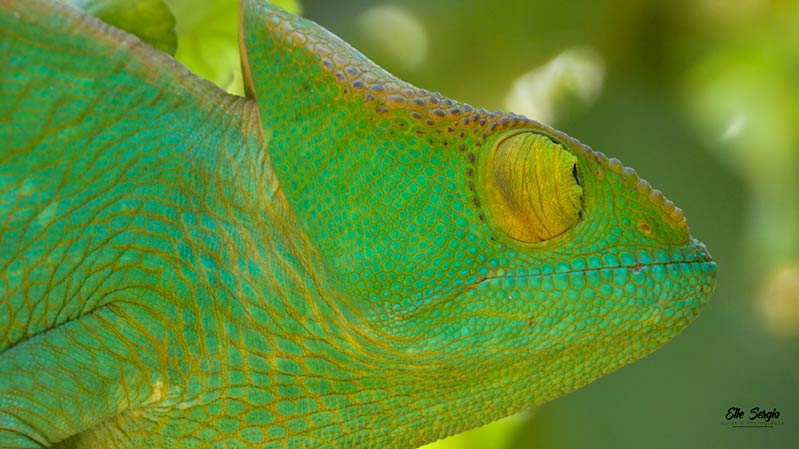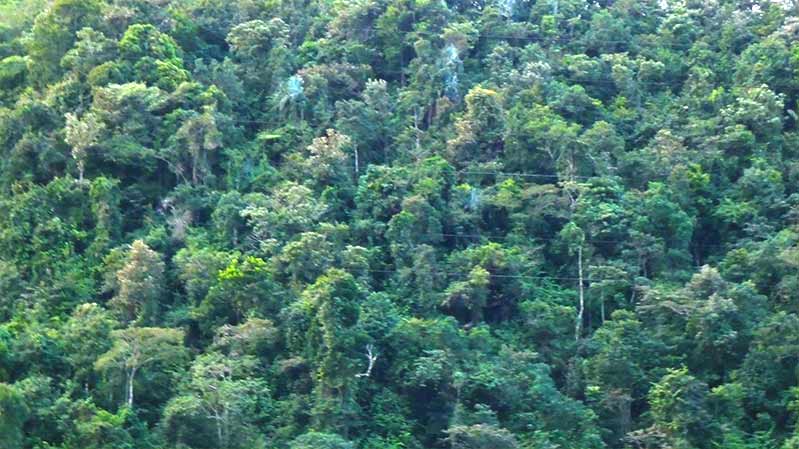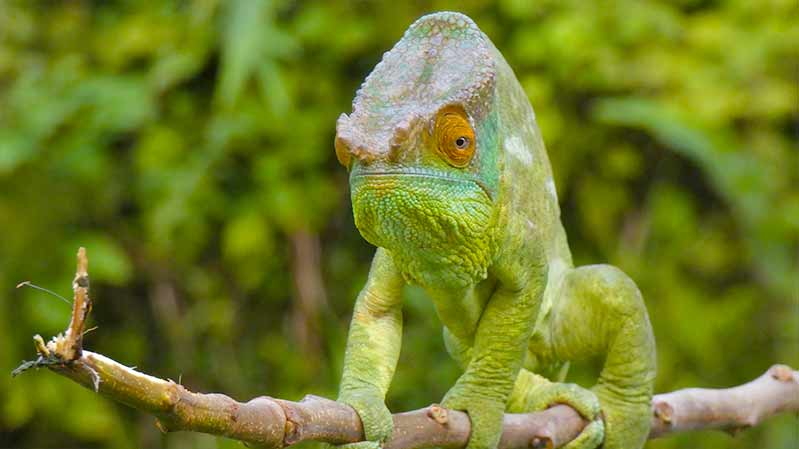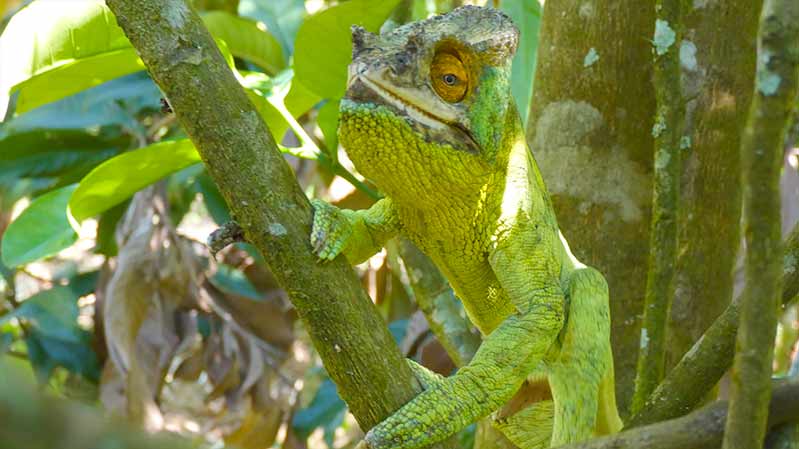Largest Chameleon
Calumma Parsonii Yellow Giant: Madagascar’s Largest Chameleon.
Calumma Parsonii Yellow Giant.
Calumma parsonii yellow giant is one of the most iconic chameleon species in Madagascar. Renowned for its vibrant yellow hue and impressive size, this chameleon attracts nature lovers and wildlife enthusiasts alike. Found in lush tropical forests, it plays a crucial role in maintaining the ecological balance of its habitat. We can find this chameleon at Vohimana reserve and Ambavanihasina village on RN2.

Physical Characteristics
The yellow giant is a subspecies of the Parson’s chameleon, scientifically named Calumma parsonii parsonii. Males often grow up to 68 centimetres, making them one of the largest chameleons globally. Their vibrant yellow-green scales provide excellent camouflage in dense foliage. Females, while slightly smaller, exhibit similar colours, blending perfectly into their surroundings.
Distinctive Features
- Size: It can weigh up to 700 grams.
- Colouration: Bright yellow and green shades dominate their appearance.
- Rostral Appendage: Males have a small, pointed horn, enhancing their striking look.
Diet and Feeding Habits
This chameleon primarily feeds on insects such as crickets, grasshoppers, and moths. Occasionally, it consumes smaller vertebrates. Their long, sticky tongue, extending over twice their body length, helps capture prey with precision.
Hunting Behaviour
- Patiently ambushes prey.
- Relies on excellent vision to locate movement.
- Uses a swift tongue strike to secure food.

Habitat and Distribution
The yellow giant thrives in the rainforests of eastern Madagascar. Common locations include Vohimana Reserve and Andasibe-Mantadia National Park. These areas offer abundant vegetation, humidity, and a stable temperature range ideal for their survival.
Preferred Environment
- High humidity levels.
- Dense canopies with low to moderate light exposure.
- Proximity to water sources like streams and rivers.
Reproduction and Life Cycle
Reproduction occurs during Madagascar’s rainy season, from November to March. After successful mating, females lay many eggs in underground nests. These eggs take around 18 months to hatch, one of the longest incubation periods among reptiles.


Growth Stages
- Juveniles exhibit duller colours for better camouflage.
- Sexual maturity is achieved within two years.
Conservation Status
The Calumma parsonii yellow giant faces threats due to habitat destruction and illegal wildlife trade. Although it is listed as Near Threatened by the IUCN, efforts are underway to protect its populations.

Conservation Efforts
- Establishing protected areas like Vohimana and Ambavanihasina village.
- Educating locals about sustainable practices.
- Promoting ecotourism to fund conservation activities.
Why Protect the Yellow Giant?
The yellow giant serves as an essential part of Madagascar’s biodiversity. It controls insect populations, helping maintain the ecosystem. Additionally, its presence attracts eco-tourists, contributing to local economies.
Final Thoughts
The Calumma parsonii yellow giant is not just a chameleon; it is a symbol of Madagascar’s rich wildlife. Protecting this magnificent species ensures a balanced ecosystem and preserves the unique biodiversity of its rainforest home.
